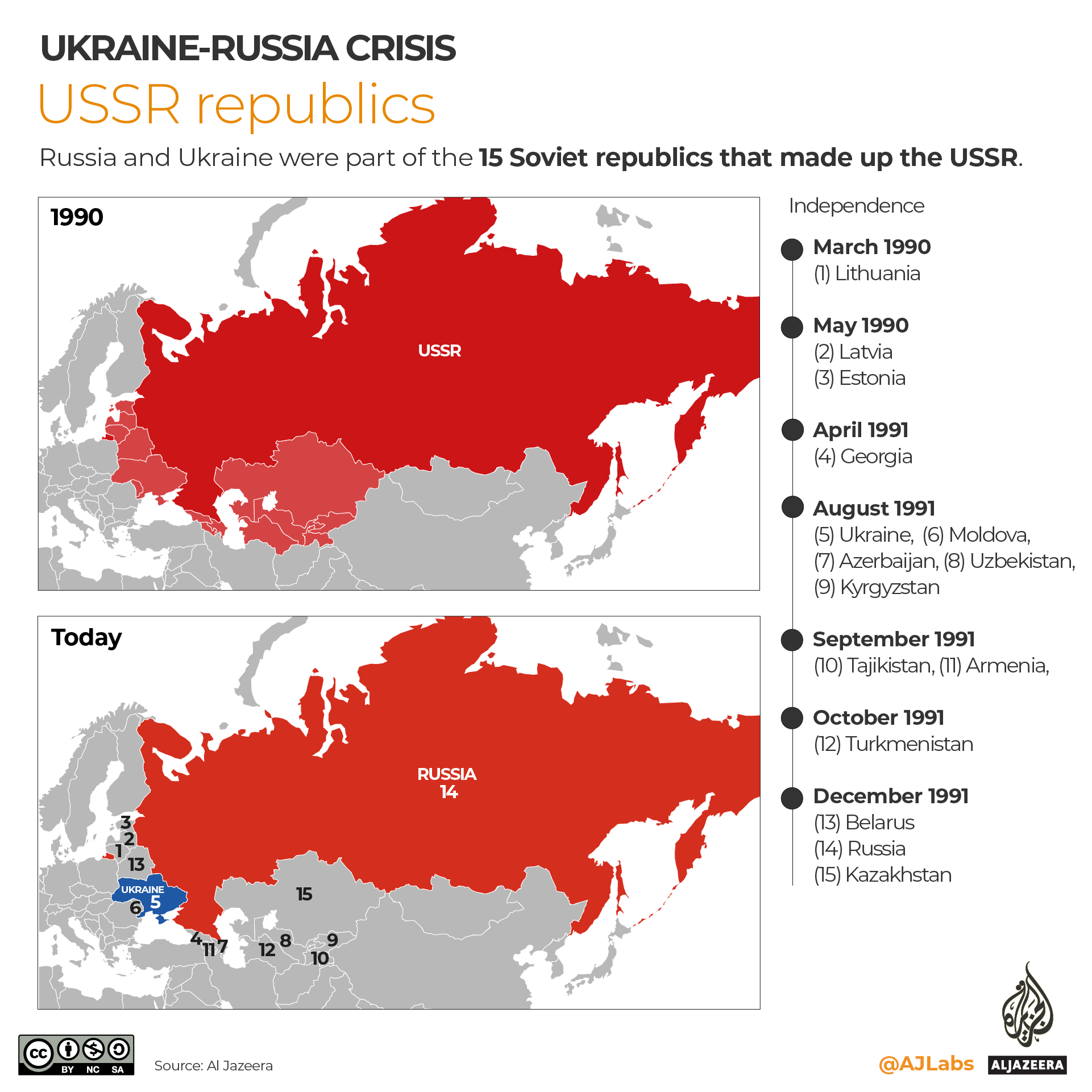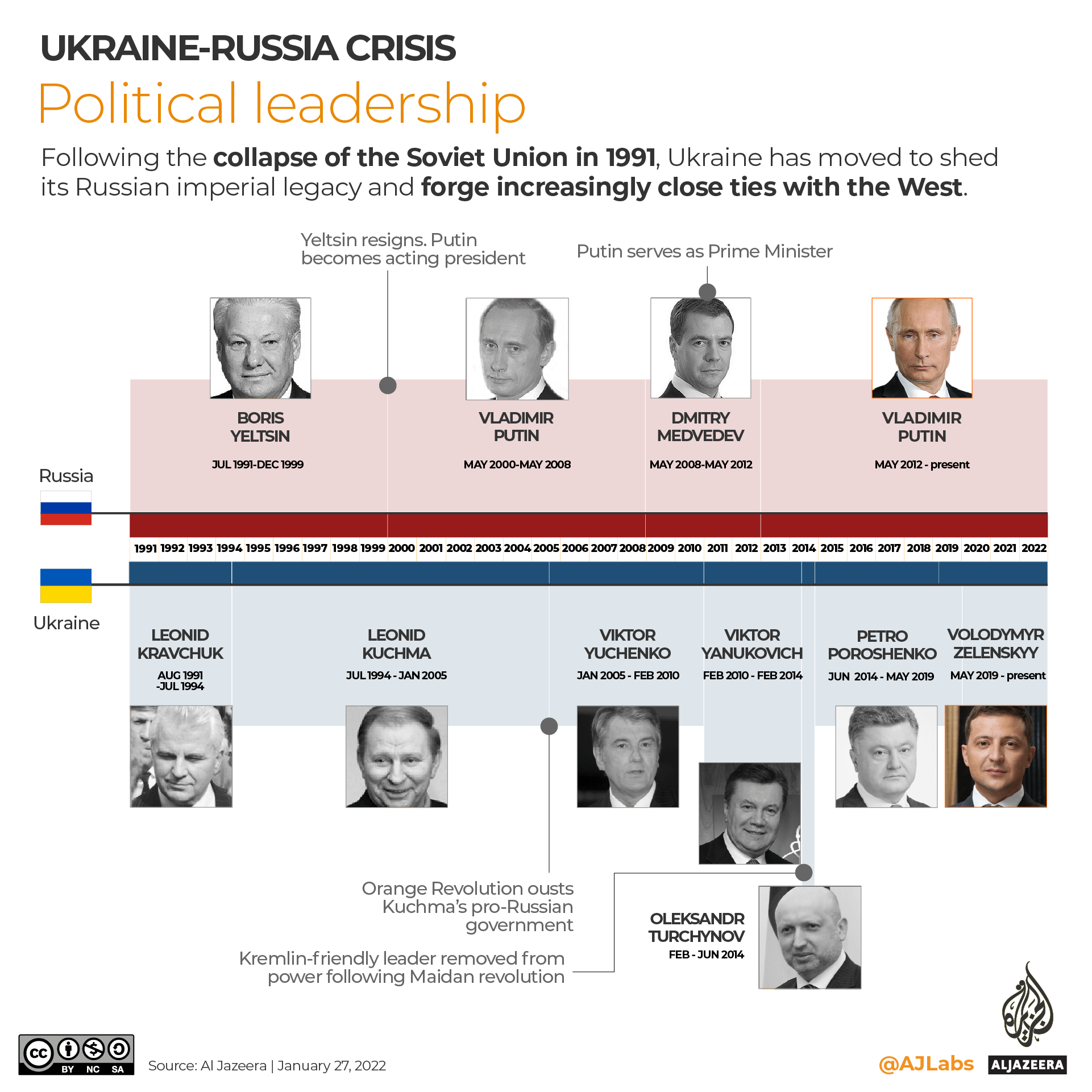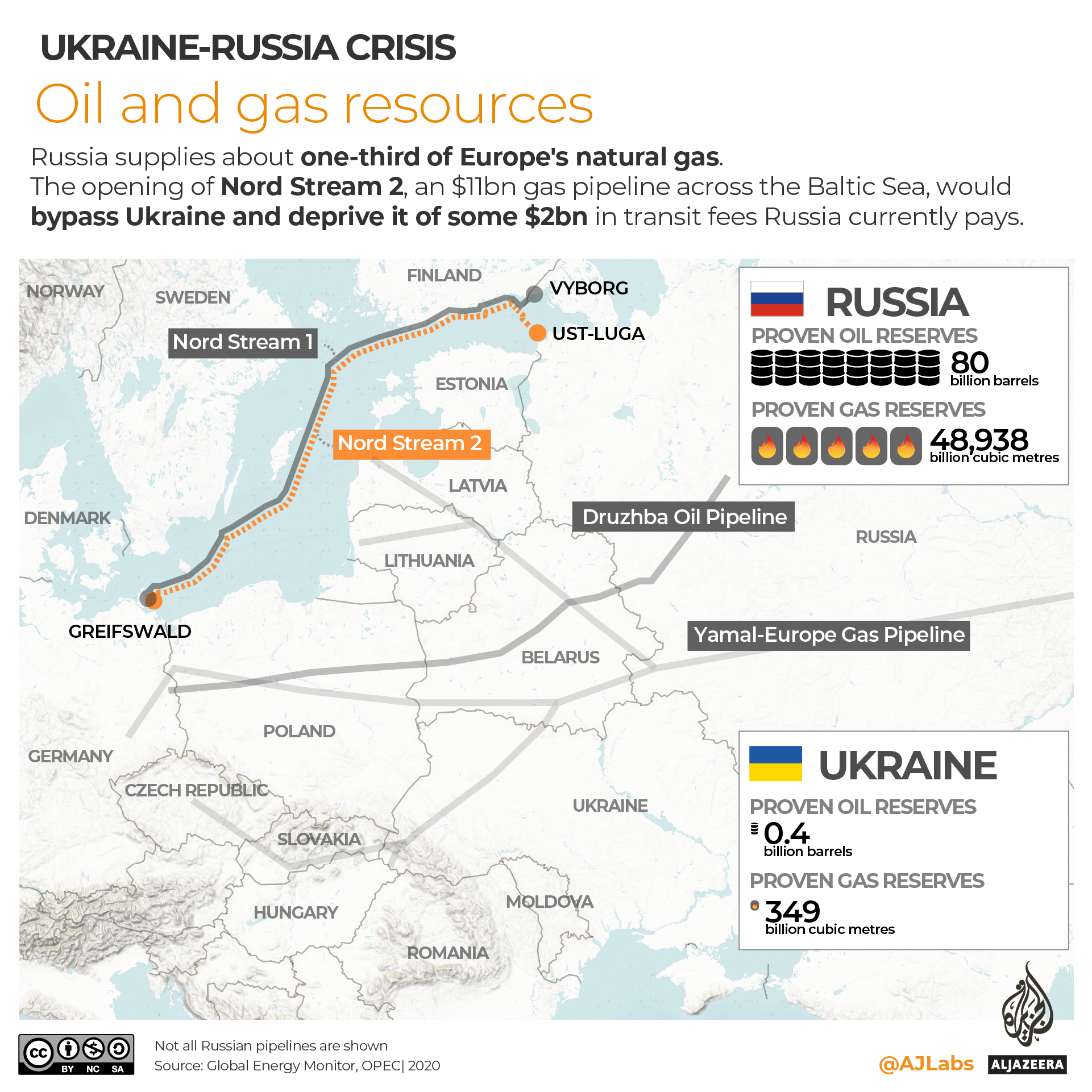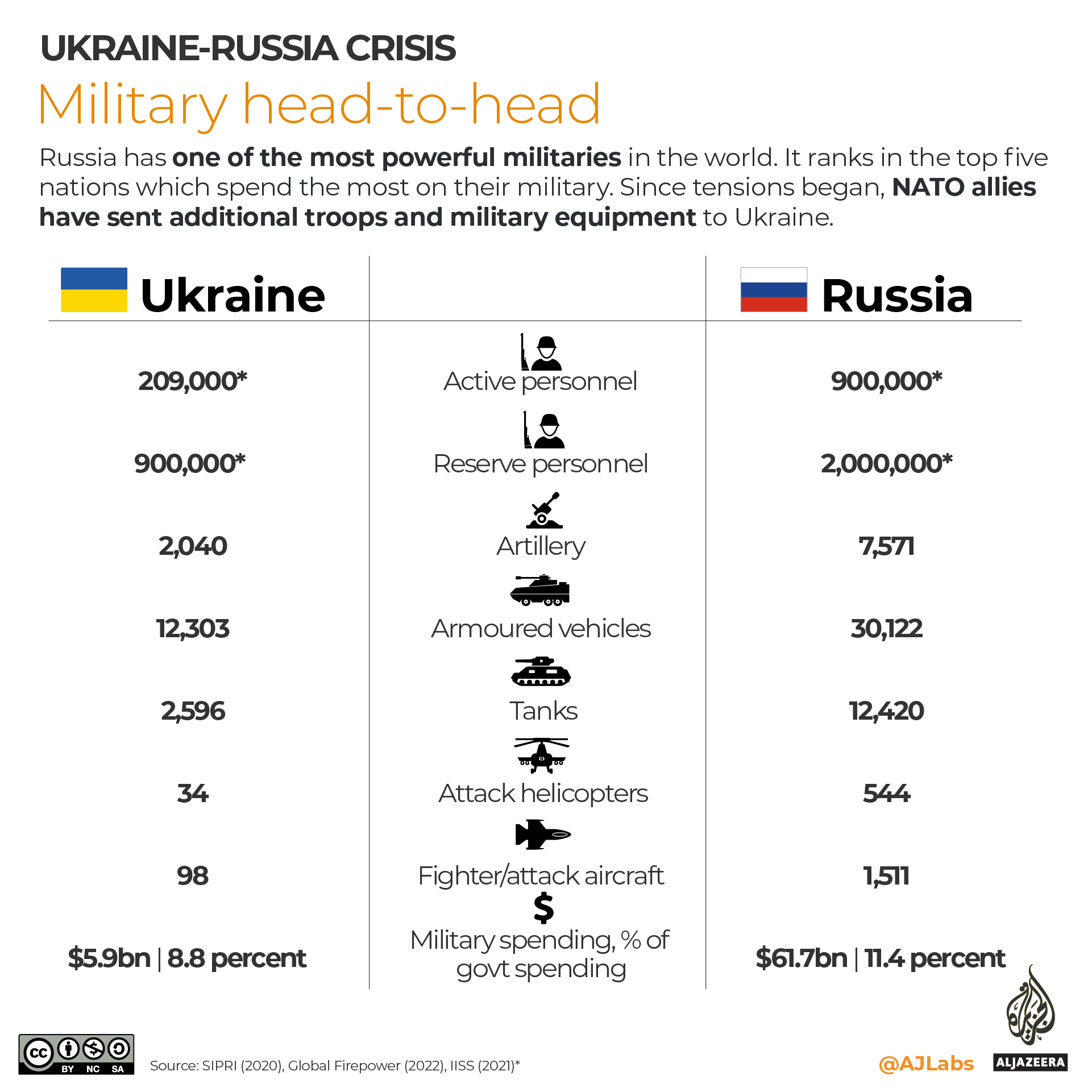
In recent weeks, Russia has built up its military presence along its border with Ukraine. An estimated 100,000 soldiers are concentrated along the frontier, with some 20,000 reportedly stationed near the Donetsk and Luhansk “republics”.
Diplomatic talks have failed to ease rising tensions. Russia opposes NATO bases near its borders and has asked for written guarantees that NATO does not expand eastwards. One of the Kremlin’s central demands is that Ukraine never be allowed to join NATO – a move it considers a red line. The United States has refused to concede to this demand.
We break down the history, politics and economics of the Ukraine-Russia crisis in eight graphics.

History of the USSR
Russia and Ukraine were part of the 15 Soviet republics that made up the USSR.
Following the collapse of the Soviet Union in 1991, Ukraine declared independence on August 24.

Political leadership
Following the collapse of the Soviet Union, Ukraine moved to shed its Russian imperial legacy and forge increasingly close ties with the West.
Over the past 30 years, Ukraine has been led by seven presidents. The country has had a rocky path towards democracy with two revolutions, first in 2005 and then in 2014. Both times, protesters rejected Russia’s supremacy and sought a path to join the European Union and NATO.
By comparison, Russia has been led by three presidents with Vladimir Putin having been in office for 17 years. In 2021, the former agent of the Soviet Union’s KGB security services signed a law which essentially enables Putin to stay in power until 2036.
Putin has repeatedly claimed that Russians and Ukrainians belong to “one people”, and are part of the historical “Russian civilisation” that also includes neighbouring Belarus. Ukrainians reject his claims.

How big are Ukraine and Russia?
Ukraine and Russia are the two largest countries in Europe. At just more than 17 million square kilometres (6.5 million square miles), Russia is the largest country in the world and roughly 28 times the size of Ukraine.
Both countries’ populations have declined since the 1990s with fertility rates among the lowest in the world. As of 2020, Russia’s fertility rate was 1.5 and Ukraine’s 1.2. For context, in order for a population to remain stable, an overall total fertility rate of 2.1 is required.

Oil and gas resources
Russia and Ukraine are both rich in oil and gas. Russia has the world’s highest proven gas reserves at 48,938 billion cubic metres. More than 70 percent of the country’s gas reserves are held by Gazprom, a state-owned energy giant.
Russia supplies about one-third of Europe’s natural gas. US sanctions over any conflict could disrupt that supply, exacerbating Europe’s energy crisis. The opening of Gazprom’s Nord Stream 2, an $11bn gas pipeline across the Baltic Sea, would bypass Ukraine and deprive it of some $2bn in transit fees Russia currently pays.
Russia also has some of the largest proven oil reserves, at 80 billion barrels, or 5 percent of the world’s total oil reserves.
Ukraine too has a sizable reserve of oil and gas at 395 million barrels and 349 billion cubic metres, respectively. The country sits at the crossroads between the West and Russia, and plays a key role in delivering Russian gas to European markets.

Economy
Western powers have imposed sanctions on Russia since 2014 when it annexed Crimea. The threat of fresh sanctions if Russia attacks Ukraine is unlikely to affect the Kremlin’s decisions.
The European Central Bank (ECB) has told lenders with exposure to Russia to be prepared for the fallout of economic sanctions.
A study into the effect of sanctions at Finland’s Aalto University found that more than 80 percent of Russian companies it sampled had experienced adverse effects between 2014 and 2017.
Ukraine has a per capita gross domestic product (GDP) of about $3,100, while Russia’s is about four times higher at $11,700. According to the National Bank of Ukraine, inflation stood at 10 percent for the country. In comparison, the Bank of Russia stated inflation was 8.5 percent in 2021.
The Russian rouble and Ukrainian hryvnia are the worst-performing emerging markets currencies so far this year, according to Reuters news agency.

Trading partners
Russia’s bilateral trade with Ukraine has tanked from its peak of almost $50bn in 2011 to $11bn in 2019. Russia remains one of Ukraine’s biggest trade partners.
In the event of outright aggression, the flow of wheat and grain could be disrupted – Ukraine and Russia are both major grain exporters and use ports located in the Black Sea, a key geoeconomic region, as a hub for transporting commodities.
Economic sanctions or military action could have a significant effect on the cost of food as importers seek to find alternatives.

Military head-to-head
Russia has one of the most powerful militaries in the world and ranks among the top five defence spenders.
In 2020, Russia spent $61.7bn on its military which accounted for 11.4 percent of government spending. In comparison, Ukraine spent $5.9bn on its military or 8.8 percent of government spending, according to the Stockholm International Peace Research Institute (SIPRI).
Since tensions began, NATO allies, fearful of a potential ground invasion by Russia, have stepped up support for Kyiv by sending additional troops and military equipment to Ukraine.
On Sunday, Ukraine received a second shipment of weapons from the US as part of a $200m defence package approved by President Joe Biden in December.








